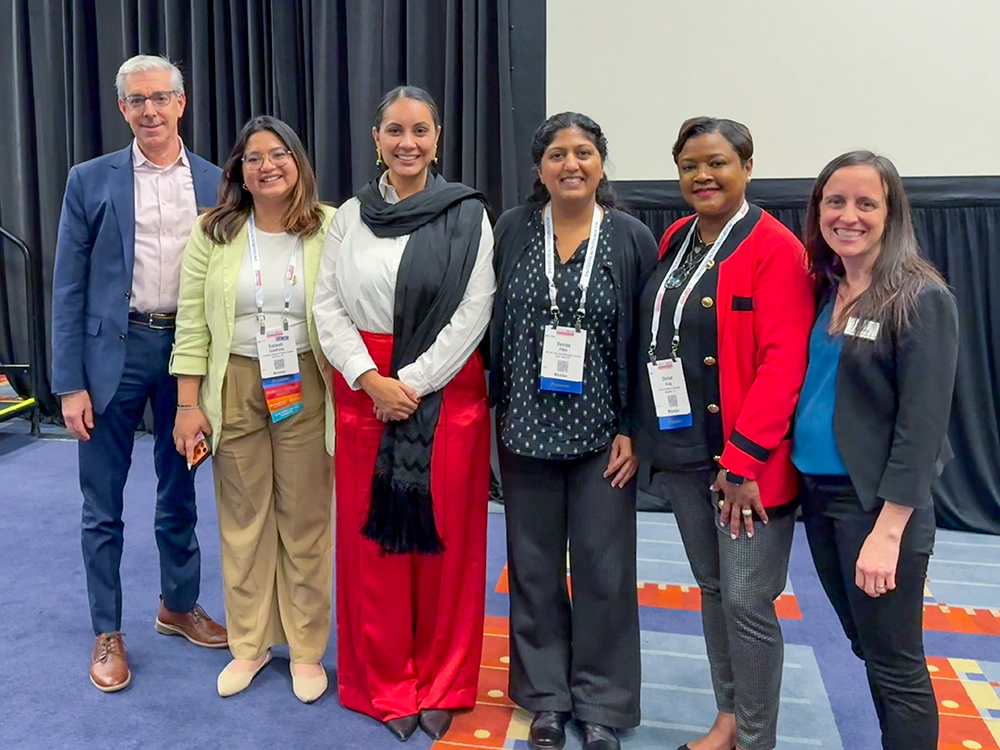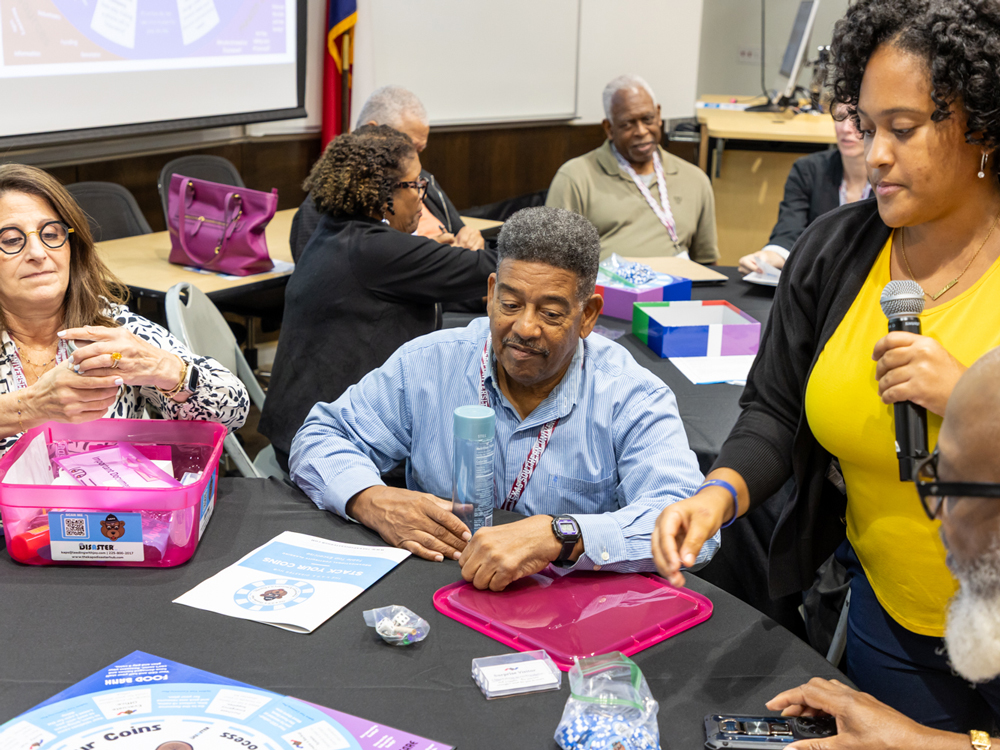Lorem ipsum dolor sit amet, consectetur adipiscing elit. Suspendisse varius enim in eros elementum tristique. Duis cursus, mi quis viverra ornare, eros dolor interdum nulla, ut commodo diam libero vitae erat. Aenean faucibus nibh et justo cursus id rutrum lorem imperdiet. Nunc ut sem vitae risus tristique posuere.
Chicago, IL - Houston, TX - November 21, 2023
In a groundbreaking site visit on Tuesday, November 21st, a Bullard Center delegation, led by Bullard Center Director, Dr. Robert Bullard, and accompanied by Graduate Research Assistant, Ed Pettitt, explored innovative green infrastructure and energy resiliency projects in Chicago's Englewood, Bronzeville, and Woodlawn neighborhoods. The tour, facilitated by Entrepreneur Success Program CEO and Urban Innovation Center co-founder, Bruce Montgomery, showcased a transformative journey through sustainability, community empowerment, and cutting-edge technology.
Exploring Englewood's Sustainable Initiatives:
One of the tour's highlights was a visit to Grow Greater Englewood, where Executive Director Anton Seals Jr shared insights into various initiatives to enhance community food security and well-being. Englewood Village Farms, a network of urban farms, works to build a local food system along the 59th Street corridor. The Englewood Nature Trail, a 2-mile linear park transforming a vacated rail corridor set to open in 2027, is part of the Englewood Agro-Eco District, fostering urban agriculture and green space. The Englewood Village Plaza serves as the entry point to the Englewood Nature Trail and hosts the Englewood Village Market, connecting residents with Black-owned businesses. The Backyard Gardens Program aims to expand urban agriculture in backyards and community gardens, while the Englewood Food Sovereignty Network develops platforms connecting local restaurants with ingredients from Black and Brown farmers. The Englewood Community Land Trust, a platform for collective stewardship of land, supports equitable development in the neighborhood, stimulating urban farming, affordable housing, and open spaces. Grow Greater Englewood's multifaceted approach reflects its commitment to creating sustainable local food economies, green businesses, and land sovereignty, empowering residents to build wellness and wealth within their community. Seals emphasized the importance of community engagement, stating, "The goal is to make neighbors feel at home in their community, not displaced from it."
Bronzeville's Journey Towards Microgrid Innovation and Energy Justice:
The tour delved into the Bronzeville neighborhood's trailblazing microgrid project, a $25 million initiative by Commonwealth Edison (ComEd) that began in 2016. ComEd, in collaboration with the U.S. Department of Energy, has already achieved a significant milestone: successful tests indicating the microgrid's ability to disconnect and reconnect during broader grid outages. Dr. Ryan Berg, ComEd's Principal Business Analyst on the smart grid programs team, noted that, in the face of weather uncertainties and climate change, utilities must evolve. The Bronzeville Community Microgrid exemplifies how utilities can lead the way in embracing microgrid solutions for a more robust and cleaner energy grid.
With the Bronzeville microgrid set to become the country's first neighborhood-scale microgrid, it serves as a test bed for the integration of distributed energy resources. ComEd plans to have these assets operational by the first quarter of 2024, not only for emergencies but also to optimize the interplay of energy resources with the larger grid.
Dr. Mohammad Shahidehpour, director of the Robert W. Galvin Center for Electricity Innovation at the Illinois Institute of Technology (IIT), emphasized that the Bronzeville microgrid initiative, as a partnership between a behind-the-meter campus microgrid and a utility-managed microgrid, should be a model for the rest of the country. The Bronzeville microgrid stands as a groundbreaking demonstration of a utility microgrid and campus microgrid working together, showcasing the potential for resilient, interconnected energy systems in real communities.
Empowering West Woodlawn through Blacks in Green's Vision:
The tour culminated in a visit to West Woodlawn, where Blacks in Green, led by Founder and CEO Naomi Davis, received a substantial boost through a $10 million EPA grant. The grant positions Blacks in Green as an Environmental Justice Thriving Communities Technical Assistance Center (EJ TCTAC) for EPA's Region 5 territory, covering tribal lands and six states. Davis outlined the organization's commitment to a "whole-system solution" for self-sustaining Black communities. The grant aligns with their holistic approach, addressing food sovereignty, energy resilience, economic development, and cultural resources.
A Vision for the Future
The site visit illuminated the convergence of community-driven initiatives, cutting-edge technology, and federal support, portraying a promising image of a sustainable and resilient future for Chicago's neighborhoods. As Dr. Robert Bullard emphasizes, "This is the right time to do the right thing. We've been doing this work, we have the experience, and we have the trust of the community. Building the capacity of organizations on the ground is key." Echoing this sentiment, Bruce Montgomery adds, "Advocacy is important, but we need to build infrastructure for real businesses, including legal and accounting capabilities. We shouldn't only be evangelists but also builders of real solutions." Dr. Bullard and his team now seek to apply these transformative lessons to ongoing initiatives in Houston, such as the Columbia Tap Trail Linear Park and African-American Heritage Corridor, the Environmental Career Worker Training Program, and the proposed Third Ward Community Microgrid project. Ed Pettitt expressed the team's commitment to sharing and applying promising practices, stating, "Our goal is to facilitate a knowledge exchange, bringing the innovative green infrastructure, energy efficiency, and microgrid practices witnessed in Chicago to communities in Houston. In particular, we aim to empower Third Ward, designated as a 'disadvantaged' Justice40 neighborhood, by leveraging these proven strategies to enhance sustainability, community resilience, and equitable access to clean energy." As the Bullard Center navigates this path, the vision is not just transformative but a blueprint for a more environmentally just and resilient future that transcends city boundaries.





